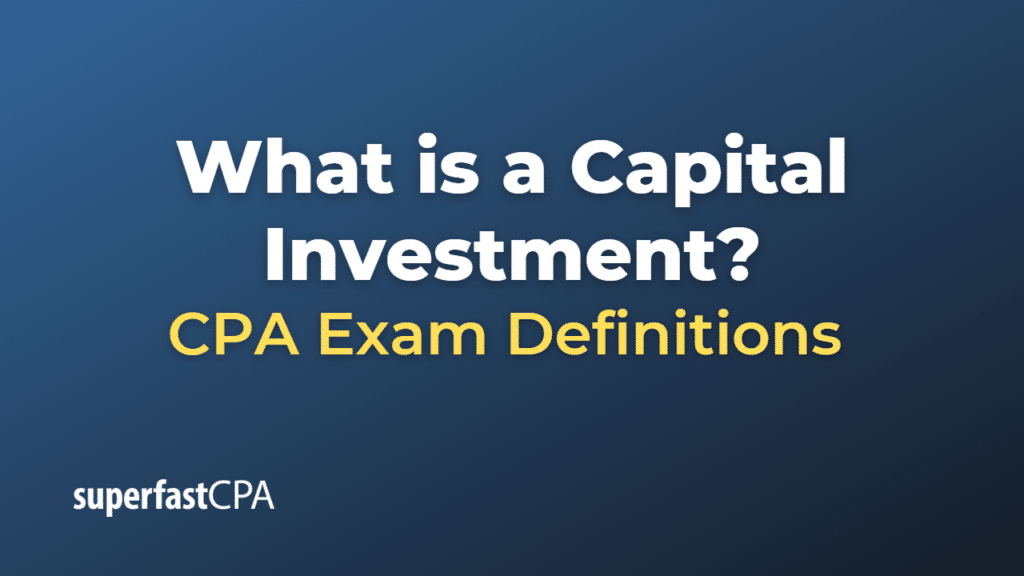Capital Investment
A capital investment, also known as a capital expenditure, is the allocation of financial resources by a company, government, or individual towards the acquisition, improvement, or maintenance of long-term assets, such as property, plant, equipment, or infrastructure. These investments are intended to enhance the productive capacity, efficiency, or value of the asset, and typically have a useful life that extends beyond one year.
Capital investments can be made for various reasons, such as:
- Expanding operations: A company may invest in new facilities or equipment to increase its production capacity or enter new markets.
- Upgrading assets: Businesses can invest in improving existing assets, such as upgrading machinery, renovating buildings, or replacing outdated technology to enhance efficiency, productivity, or product quality.
- Maintaining assets: Companies need to invest in the maintenance and repair of their assets to ensure their continued functionality and preserve their value.
- Compliance: Investments may be necessary to comply with regulatory requirements, such as environmental or safety standards.
Capital investments are distinct from operating expenses or working capital, which are short-term expenses related to a company’s day-to-day operations, such as wages, rent, and utilities. Capital investments are typically recorded on a company’s balance sheet as fixed assets and are depreciated or amortized over their useful life.
From an individual perspective, capital investments can include purchasing real estate, starting a business, or investing in financial assets like stocks and bonds. These investments are generally made with the expectation of generating income, building wealth, or achieving financial goals over the long term.
Example of a Capital Investment
Let’s consider a fictional example of a company called “HealthyBeverages Inc.”
HealthyBeverages is a growing company that specializes in producing and distributing natural, health-focused beverages. The company has experienced increased demand for its products and decides to make several capital investments to expand its operations and improve efficiency.
Some of the capital investments HealthyBeverages plans to make include:
- New production facility: The company decides to build a new, state-of-the-art production facility to increase its manufacturing capacity and meet the growing demand for its products. This investment will involve acquiring land, constructing the building, and installing production equipment.
- Upgrading production lines: To enhance efficiency and reduce production costs, HealthyBeverages invests in modernizing its existing production lines by acquiring new, more advanced machinery and automation systems.
- Warehouse expansion: To accommodate the increased inventory resulting from higher production levels, the company decides to expand its warehouse facilities, allowing it to store more products and improve logistics management.
- New delivery trucks: HealthyBeverages decides to invest in a fleet of new, fuel-efficient delivery trucks to reduce transportation costs, decrease its environmental footprint, and ensure timely deliveries to its customers.
These capital investments will be recorded as fixed assets on HealthyBeverages’ balance sheet and will be depreciated over their useful life. The investments are expected to contribute to the company’s growth, improve its competitive position, and enhance its profitability in the long term.
This example illustrates how capital investments can be utilized by a company to expand its operations, increase efficiency, and ultimately drive growth and profitability.












